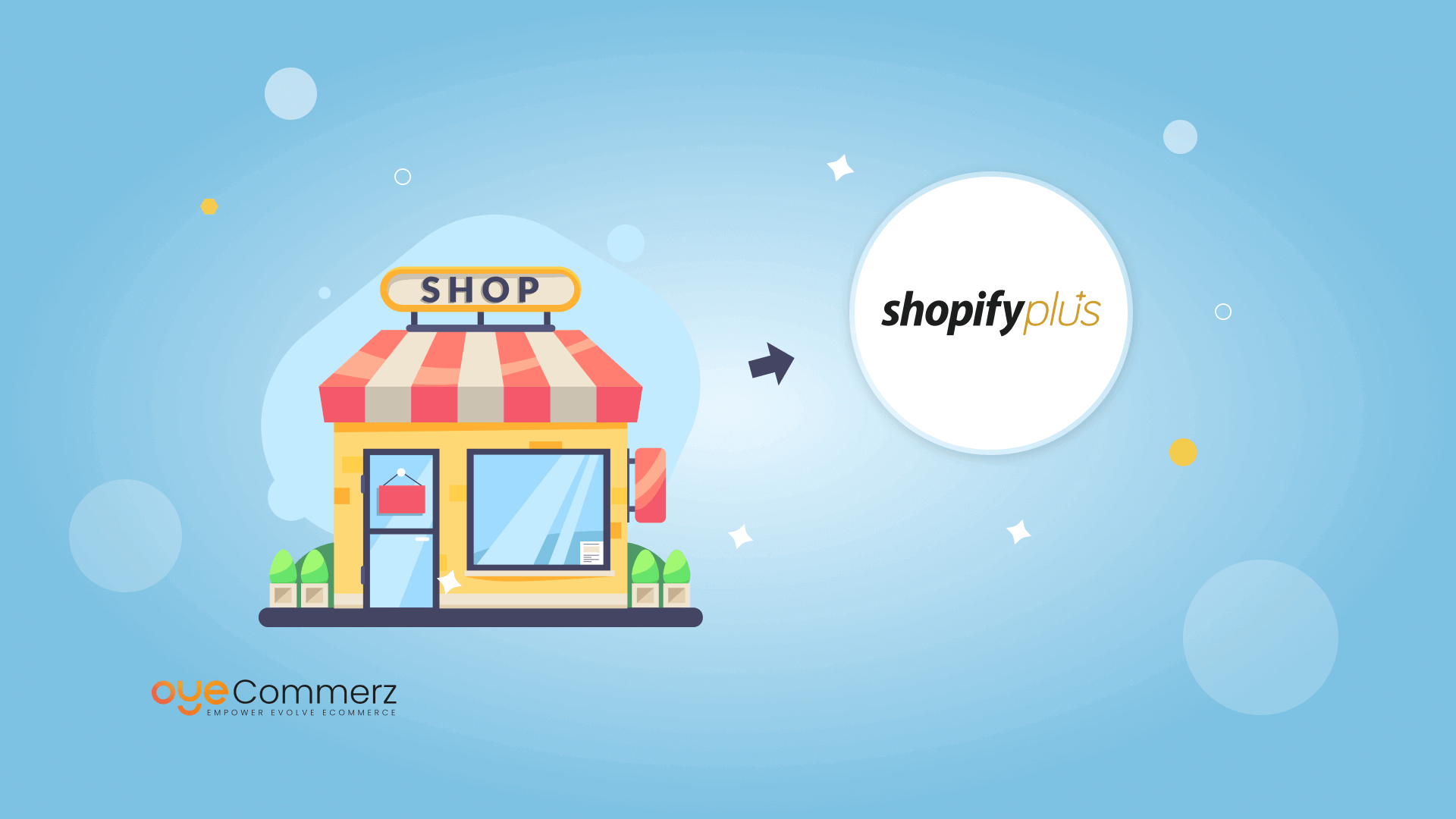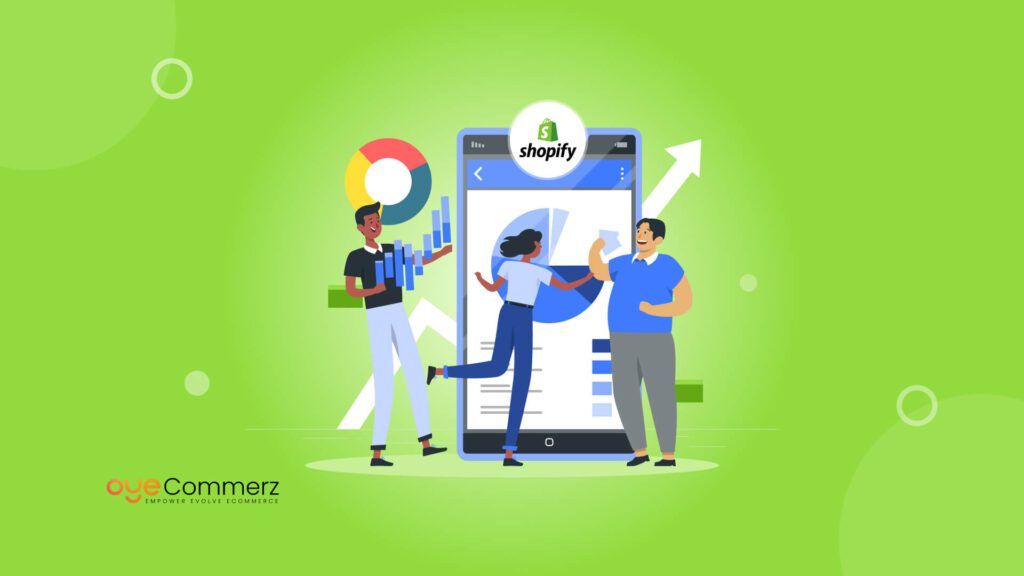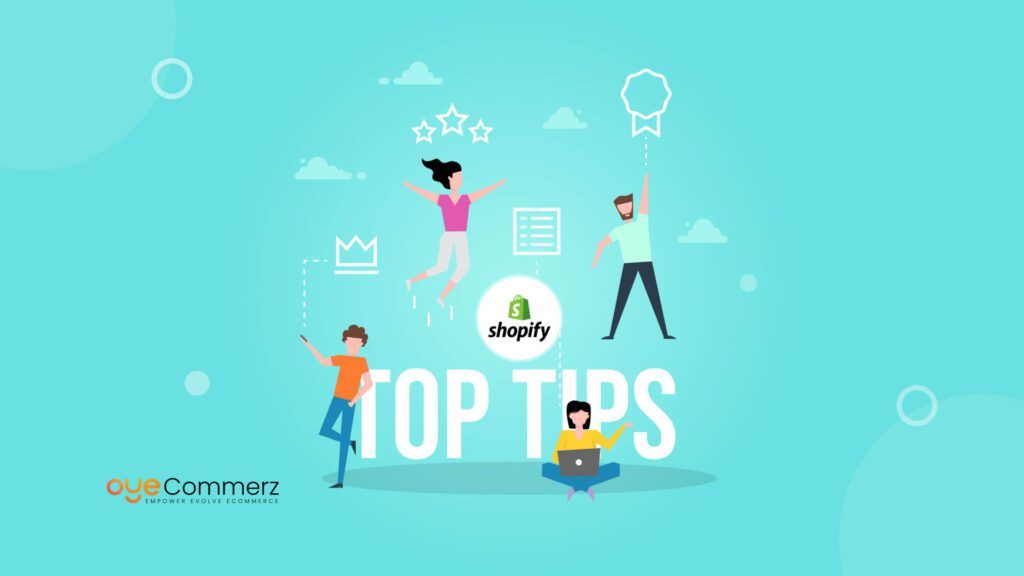Imagine your online store as a bustling city—full of potential but constrained by outdated infrastructure. As your business grows, your current platform may start to feel like a small town, unable to keep up with the demands of a thriving metropolis. It’s time to upgrade to Shopify Plus, the platform that not only supports but accelerates your expansion, offering the tools and flexibility needed to transform your e-commerce venture into a global powerhouse.
With experts , you can seamlessly migrate your store design and ensure your business is equipped to handle the growth and complexity that come with success. In this guide, we’ll take you through the process of migrating your store design to Shopify Plus, ensuring you’re set up for long-term scalability.
Table of Contents
ToggleBenefits of Migrating to Shopify Plus
Before diving into the Benefits of Migrating, it’s crucial to understand the Guide to Migrating from Shopify to Shopify Plus and why Shopify Plus is the preferred platform for many enterprise-level e-commerce businesses. Shopify Plus offers a range of benefits that can profoundly enhance your online store’s performance and scalability.
Scalability and Performance
Shopify Plus is built to handle high-volume traffic and transactions, making it ideal for businesses experiencing rapid growth or planning for expansion. The platform can easily accommodate sudden spikes in traffic, ensuring your store remains operational during peak sales periods or marketing campaigns.
According to recent statistics, Shopify Plus can handle up to 10,000 transactions per minute, providing the reliability and speed necessary for enterprise-level operations. This scalability is crucial for businesses looking to expand into new markets or launch global sales events.
Customization and Flexibility
One of the key advantages of migrating your online store design to Shopify Plus is the level of customization available. The platform offers a wide range of themes and design options, allowing you to create a unique and branded shopping experience for your customers.
Global Expansion Capabilities
For businesses looking to expand globally, Shopify Plus offers built-in features that simplify international operations. These include:
- Multi-language support
- Multi-currency capabilities
- Localized payment gateways
- Automated tax and duty calculations
These features enable businesses to create localized shopping experiences for customers around the world, potentially increasing conversion rates and customer satisfaction.
Advanced Features and Integrations
Shopify Plus comes with a host of advanced features designed to streamline operations and enhance the customer experience. These include:
- Shopify Flow for workflow automation
- Launchpad for coordinating marketing events and product launches
- Script Editor for customizing checkout experiences
Additionally, Shopify Plus integrates seamlessly with a wide range of third-party apps and services, allowing businesses to create a tailored e-commerce ecosystem that meets their specific needs.
Planning Your Migration to Shopify Plus
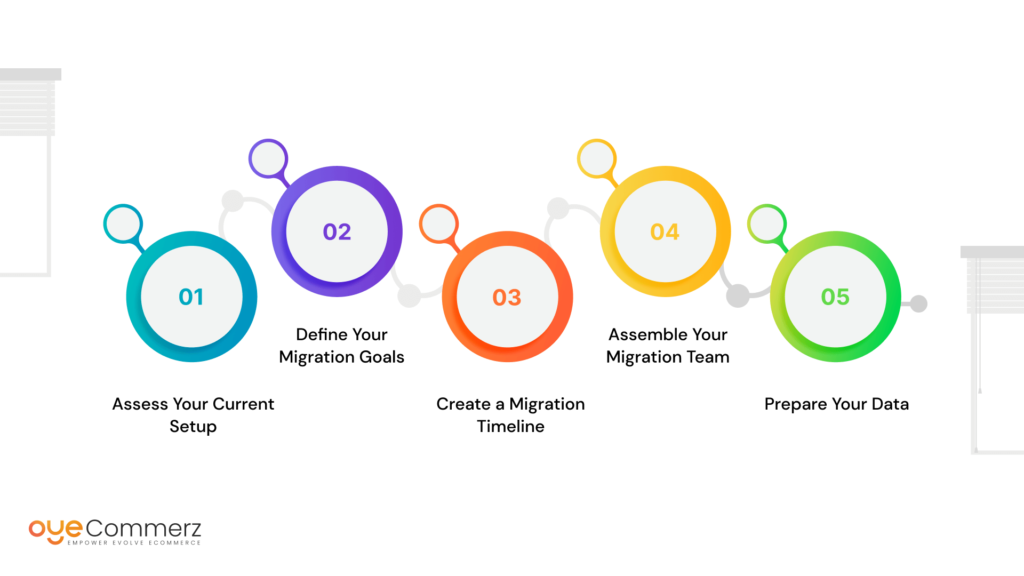
Migrating your online store design to Shopify Plus is a significant undertaking that requires careful planning and execution. Here’s a step-by-step guide to help you navigate the process successfully.
Step 1: Assess Your Current Setup
Before initiating the migration, conduct a thorough assessment of your current e-commerce platform. This includes:
- Cataloging all products, including variants and custom options
- Documenting current site structure and navigation
- Identifying custom features and functionalities
- Reviewing current integrations and third-party apps
This assessment will help you identify potential challenges and opportunities in the migration process.
Step 2: Define Your Migration Goals
Clearly outline what you hope to achieve with the migration to Shopify Plus. This might include:
- Improving site performance and speed
- Enhancing the customer experience
- Expanding into new markets
- Streamlining backend operations
Having clear goals will guide your decision-making throughout the migration process.
Step 3: Create a Migration Timeline
Develop a realistic timeline for your migration, taking into account:
- The complexity of your current setup
- The volume of data to be migrated
- Any customizations or integrations required
- Testing and quality assurance processes
Step 4: Assemble Your Migration Team
Identify key stakeholders and team members who will be involved in the migration process. This might include:
- Project manager
- Developers and designers
- Content and SEO specialists
- Quality assurance testers
Consider partnering with a Shopify Plus Expert agency like Oyecommerz to ensure a smooth migration process and leverage industry best practices.
Step 5: Prepare Your Data
Clean and organize your data before migration. This includes:
- Standardizing product information
- Removing outdated or irrelevant content
- Ensuring consistent formatting across all data points
Clean, well-organized data will streamline the migration process and improve the accuracy of your new Shopify Plus store.
Executing the Migration to Shopify Plus
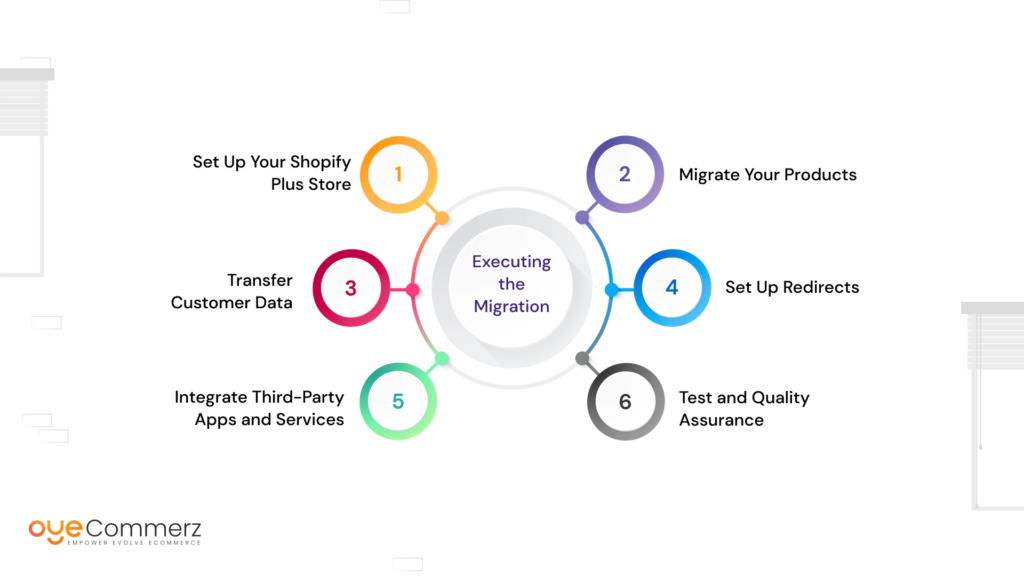
With your planning complete, it’s time to execute the migration of your online store design to Shopify Plus. This process involves several key steps to ensure a smooth transition.
Step 1: Set Up Your Shopify Plus Store
Begin by setting up your new Shopify Plus store. This includes:
- Choosing and customizing your theme
- Configuring basic store settings
- Setting up payment gateways and shipping options
Take advantage of Shopify Plus’s customization options to create a unique store design that aligns with your brand identity.
Step 2: Migrate Your Products
Use Shopify’s import tools or a third-party migration app to transfer your product catalog. Pay close attention to:
- Product titles, descriptions, and images
- Variants and custom options
- Pricing and inventory information
Step 3: Transfer Customer Data
Migrate customer data, including:
- Customer accounts
- Order history
- Wishlists and saved items
Ensure compliance with data protection regulations like GDPR when transferring customer information.
Step 4: Set Up Redirects
Implement 301 redirects from your old URLs to the corresponding pages on your new Shopify Plus store. This is crucial for:
- Maintaining SEO rankings
- Ensuring a smooth user experience for returning customers
Step 5: Integrate Third-Party Apps and Services
Re-establish connections with essential third-party apps and services, such as:
- Email marketing platforms
- Customer service tools
- Inventory management systems
Shopify Plus offers a wide range of native integrations, simplifying this process for many popular services.
Step 6: Test and Quality Assurance
Thoroughly test your new Shopify Plus store before launch. This includes:
- Checking all pages and product listings
- Testing the checkout process
- Verifying mobile responsiveness
- Ensuring all integrations are functioning correctly
Post-Migration Optimization and Growth
Once your online store design has been successfully migrated to Shopify Plus, it’s time to focus on optimization and leveraging the platform’s features for growth.
Optimizing Site Performance
Take advantage of Shopify Plus’s built-in performance optimization tools, including:
- Content Delivery Network (CDN) for faster global load times
- Automatic image optimization
- Accelerated Mobile Pages (AMP) support
Regularly monitor your site’s performance using tools like Google PageSpeed Insights and make adjustments as needed.
Enhancing the Customer Experience
Utilize Shopify Plus features to create a superior shopping experience:
- Implement personalized product recommendations
- Use Shopify Scripts to create custom checkout experiences
- Leverage Shopify Flow for automated customer service workflows
Expanding Your Global Reach
Leverage Shopify Plus’s international features to expand into new markets:
- Set up multi-language stores
- Implement multi-currency support
- Utilize Shopify Markets for streamlined cross-border selling
According to recent statistics, businesses using Shopify Plus’s international features have seen an average increase of 40% in global sales within the first year.
Continuous Improvement and Innovation
Stay ahead of the curve by:
- Regularly reviewing and updating your store design
- Experimenting with new Shopify Plus features and apps
- Staying informed about e-commerce trends and best practices
Seamlessly Migrate to Shopify Plus with Oyecommerz
Thinking about migrating your online store design to Shopify Plus? Oyecommerz, a skilled Shopify Plus development agency, is here to guide businesses of all sizes—whether you’re a growing startup or a large enterprise. We offer tailored migration services, including custom theme design, third-party app integrations, and global expansion strategies, ensuring your store is optimized for success.
Let us simplify your migration process, so you can focus on scaling your business. Ready to make the move? Contact Oyecommerz today, and let’s bring your e-commerce vision to life with Shopify Plus!
Contact to Migrate your Site to Shopify Now
Conclusion
Migrating your online store design to Shopify Plus is more than just a platform upgrade—it’s a strategic move to future-proof your business. By embracing the advanced capabilities of Shopify Plus and leveraging Shopify plus expert , you’re positioning your brand to thrive in an increasingly competitive e-commerce landscape. The journey may require careful planning and execution, but the rewards are immense: enhanced performance, global scalability, and a customized shopping experience that resonates with your customers.
As you embark on this migration, remember that the right platform, paired with skilled development, can unlock new growth opportunities and elevate your e-commerce business to unprecedented heights. The time to act is now—set sail towards success with Shopify Plus.

